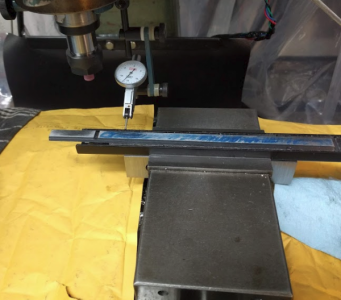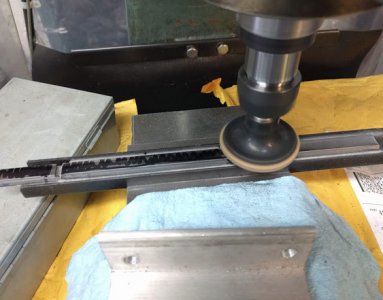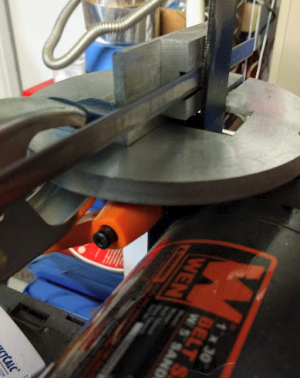OK guys. So here's what I did yesterday. I decided to use a Dremel type grinding stone on the mill but in order to do that I had to hold this thin gib strip flat and supported but also open at the top. I don't have a magnetic vise/chuck but I do have those cheap Harbor Freight magnetic tool holders. I put that in the vise on top of a pair of parallels, then indicated off the edge of it and then laid the gib strip on top. This was surprisingly secure, in fact, in the end it was almost impossible to remove the gib strip but I was able to slide it off. I also used the sander.



What worked and what didn't work:
1. The small grinding stone was dissolving way too fast to be trusted to create a flat surface. Next I tried Roloc as I didn't have anything else.
2. The Roloc even the most aggressive 100 grit pad left a fantastic finish (very polished) but wasn't removing material fast enough. It also wasn't digging into the material when I moved the z-axis to say .01" at a time because of the soft pad material. Lastly it generated a lot of heat into the part so hopefully I didn't work harden the gib strip. So this would work great for a polished finish (or removing rust/milscale like it's usually used for) but not so much for sanding metal.
3. The belt sander removed material the fastest. I'm sure if the jig could be refined to use a magnetic slide or something it would work fairly well. In fact, knife makers on youtube seem to use something similar quite successfully as a poor man's surface grinder.
The end result? It worked. I can now run the slide all the way to the back and to the front very smoothly and evenly using the handwheel (which btw sucks due to it's poor design but that's another story). No play in the cross slide when I tugged on it while in both extreme in and out positions so I'm very happy with the results.
Thanks to everyone for your help and suggestions, hope I provided some entertaining value here if nothing else






